Planeswalker's Guide to Strixhaven
Welcome to Strixhaven University, a magical school unlike any other on the plane of Arcavios. In this guide, we'll walk you through the university and the five colleges within. Your education begins today!
Strixhaven University
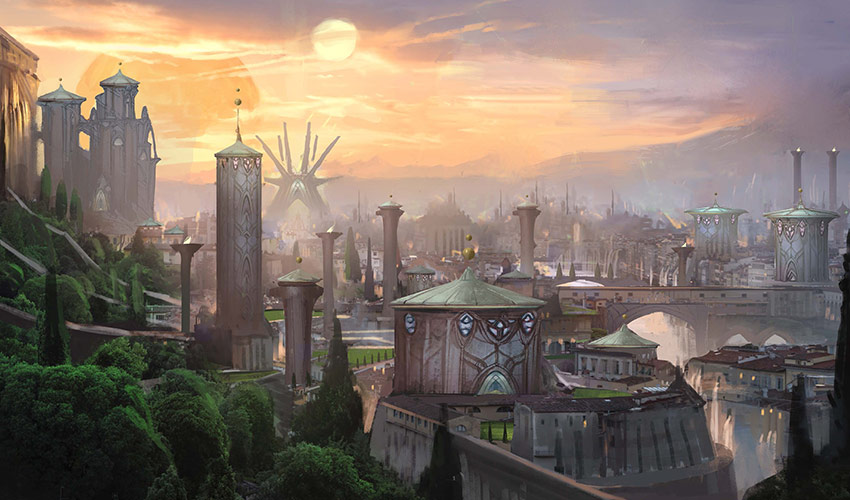
Founded some 700 years ago by five spellcasting dragons, Strixhaven University is Arcavios's premier institution of magical learning, drawing promising young mages from all around the plane to study in its halls. Strixhaven is divided into five colleges, each with its own campus, faculty, and magical specialties. Each of the five colleges focuses on the clashing of two opposing mana colors: Silverquill in white and black, Prismari in blue and red, Witherbloom in black and green, Lorehold in red and white, and Quandrix in green and blue.
The mission of Strixhaven University is to discover and preserve magical knowledge, disseminate that knowledge from one generation to the next, promote the free and open study of magic in all its forms, and enhance the lives of people throughout the plane through the use of magic.
Torches of Enlightenment
Five lines of beacon-towers radiate out from the center of Strixhaven like enormous spokes, stretching more than a hundred miles out into the surrounding countryside. These Torches of Enlightenment burn eternally with magical flame, symbolizing the path toward learning and an escape from ignorance. The five lines converge at the Biblioplex.
The Biblioplex
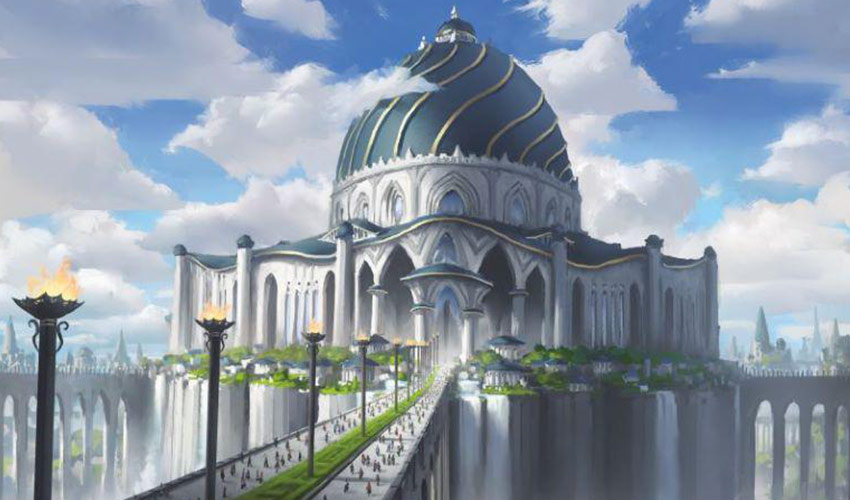
The Library of Strixhaven, also known as the Biblioplex, forms the center of the university. Doorless, arch-shaped entrances (their design inspired by the magical star arches found across the plane) welcome inquisitive minds into the library. Inside, almost every surface from floor to unreasonably high ceiling is jammed with stacks of books. The interior of the Biblioplex is vast, with impossibly long hallways, archive chambers tall enough to have their own weather, and even pools and moat-passages that must be crossed by boat.
Within the Biblioplex is the Mystical Archive, an impossibly large wing that is said to contain a copy of every spell ever created in the Multiverse. While mortal life is too fleeting to contest such a claim, it is clear that the Archive contains an uncountable number of powerful spells.
At the very center of the Biblioplex is the Hall of Oracles, an awe-inspiring chamber lined with monuments. The heart of the Hall is the Strixhaven Snarl, a massive, luminous tangle of pure mana that illuminates this chamber like a magical sun.
Mage Tower
Mage Tower is a competitive team sport played by mage-students at Strixhaven. Each of the five colleges fields its own team and brings a mascot creature that also plays into the scoring rules. Mage Tower is the main spectator sport at Strixhaven, drawing huge crowds of fans from the university and beyond.
The Rules of Mage Tower
- Two opposing teams meet in Strixhaven Stadium. Each team is composed of five mages, plus one small mascot creature.
- Each team has a tall tower at their end of the stadium with their mascot creature at the top.
- The goal is to score a point by stealing the opposing team's mascot and transporting it back to your own tower.
- All magic that would harm a player, mascot, or spectator, or that would damage the stadium or basic rules of the game in any way, is nullified.
- Otherwise, all magic is legal, subject to the review of the Mage Tower Referee Council.
- The game lasts for three phases. Each phase lasts as long as it takes for the Mage Tower hourglass to empty, which is approximately 20 minutes. (Sometimes the last few grains of sand in the hourglass take their sweet time to roll around and drop to the bottom.)
- When time is called at the end of the third phase, the team with the most points wins.
Students and Faculty
Mage-Students
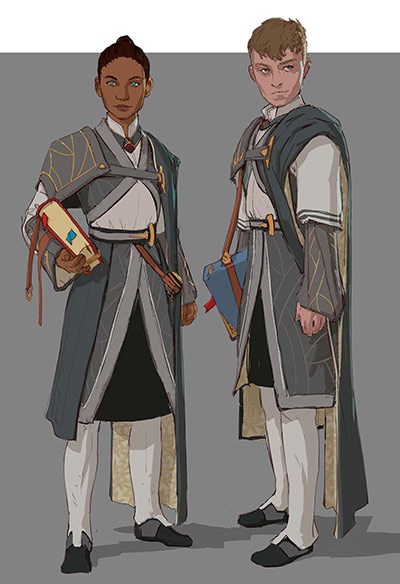
The attendees of Strixhaven are known generally as mage-students. New students are called first-years until they choose one of Strixhaven's five colleges of study. All first-years wear a standardized university uniform that is distinct from the look of any of the colleges.
Generally, after a student's first year of basic curriculum (hence the name), they choose one of the five mystic colleges. Thereafter, they dress in accordance with their chosen college.
Two Mentors
Once a mage has chosen a college, they are assigned two counselors, one from each of the two mana colors of the college. The two counselors often give conflicting advice about the student's best path through the university—for example, a Quandrix student might hear one set of advice from their green-aligned mentor, encouraging them to build their skills in summoning powerful creatures, while their blue-aligned mentor might push them toward abstraction, illusion, and mathematical theory.
Eventually, the mage chooses their concentration (represented by their color identity). The mage's concentration is usually one of their college's two mana colors, but sometimes, it's a blend of both.
Professors
Professors of Strixhaven are mages advanced in their chosen magical field who have devoted their lives to teaching other mages. There are several ranks of professors according to seniority, distinction of magical research, and knowledge of spells.
Instructor – A mage who teaches classes and their own curriculum but who has not yet passed a provisionary period of observation and evaluation to become a full professor.
Professor – An established, accredited educator devoted to a field of magical study. Most of the educators at Strixhaven have the professor rank.
Esteemed Professor – A professor who has distinguished themselves in their career, usually through published and peer-reviewed magical research or other specialized study. Most esteemed professors have taught at Strixhaven for over twenty years.
Dean – Each college has two deans who each head up one half of that college. Each dean is a powerful mage and distinguished professor who's aligned with one of the two mana colors of that college. The ten deans are like contradictory advisors to the entirety of their college; they have deep professional rivalries with each other and always disagree with the other about the best path for studying magic.
Mage Emeritus – A professor who no longer holds a position at Strixhaven is often called a mage emeritus. Mages emeritus are frequently held in high esteem as guest lecturers and speakers.
After Strixhaven
Graduates from Strixhaven travel many different paths after leaving the university. Many simply return to their communities, using their magic to help at home. Some mages travel the plane in search of ever-greater magic, engaging in mage duels when they encounter others along their path. Some find a new home with a loved one or with their own mystical pastimes. Some create sanctums or laboratories to continue their study, perhaps even hoping to one day return to Strixhaven as professors themselves. A select few join the Dragonsguard, an elite force of mages who work with the honored Founder Dragons.
Silverquill College
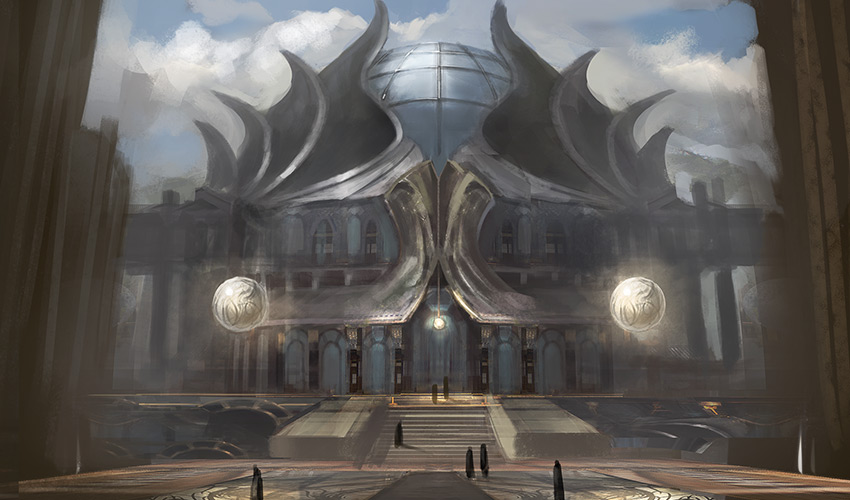
"We agree that language is civilization's most powerful weapon. We argue over whether to use it to inspire our allies or shatter our enemies."
— Rinald, Silverquill inkmancer
The College of Eloquence
Stylish, intimidating, and driven, Silverquill mages are masters of the magic of words. They create spells from spoken-word battle poetry or magical manifestations of the written word, writing patterns of runic ink on the air. Silverquill mages are natural leaders, driven and competitive, with a piercing wit and a never-second-place attitude. When you see a group of Silverquill mages coming toward you, you're struck by how devastatingly good-looking, put‑together, and well-dressed they are, orbited by their flitting "inklings" that congeal into runes and glyphs as they weave their magic.
The Dichotomy of Silverquill
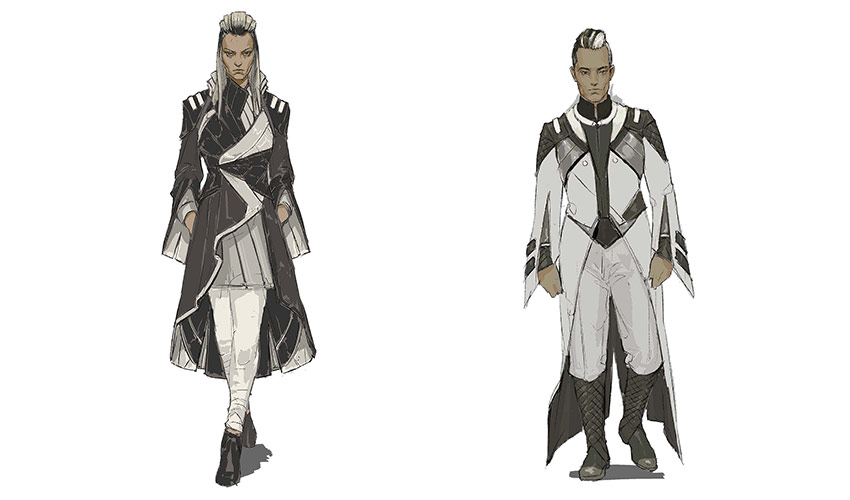
This section explores the opposing beliefs and magics that make up Silverquill. For any college, a mage can also embody both colors of magic, combining aspects and spells into a unique identity.
White
The white side of Silverquill is about using the power of language to uplift and inspire their allies and shine light on the evils of society. Inkwrights, glyphweavers, and uillmancers conjure energizing verses that manifest as living ink. Warsingers, silvertongues, and battle poets use the power of their vocal performance to stir hearts and energize the air around them. Vainglories and honormancers wield the power of a perfectly crafted compliment (often directed at themselves) to enhance a person's most splendid attribute. Scornmages and lumimancers bring light to bear on shameful situations and hold corrupt institutions to account.
Black
The black side of Silverquill is about the power of language to point out stinging truths and attack their rivals. Bantermages, shadelocks, witstingers, and daunters use their incisive observations to pierce the confidence of their rivals. Inkcasters, duskmages, and shadewings can conjure inky voids of shadow magic, sometimes crafting them into living flying creatures called inklings or weapons made of pure darkness.
Locations
Grandloft Hall
The main Silverquill building is Grandloft, a vast train-station-like space with shafts of light streaking in from the enchanted windowpanes far above. Grandloft is filled with balconies, loges, booths, daises, and other spaces where orators can perform their craft. Inklings flit around the high windowed ceiling, and enchanted spotlights automatically focus on any mage who's using powerful magic.
The Rose Stage
The Rose Stage is a rotating circular platform on the Silverquill campus with a backdrop of roses made of magical ink (tributes left by spectators of past performances) that create excellent acoustics. Mage-students meet at the Rose Stage to practice performances, spar, or engage in honor duels. Professors and faculty often observe performances at the Rose Stage, watching and coaching the students' magical displays from the sidelines.
The Dramarium
A facility where Silverquill students train in physical fitness, dance, martial arts, and other acts of physical performance. Students can avail themselves of the preparation space called the Gray Room (actually a chain of rooms), which has hair and makeup salons, voice rehearsal booths, mirrored oration rehearsal spaces, and spa facilities. The back of the Dramarium has a special sensory deprivation chamber for mage-students who want complete silence in which to meditate and center themselves.
College Mascot: Inklings
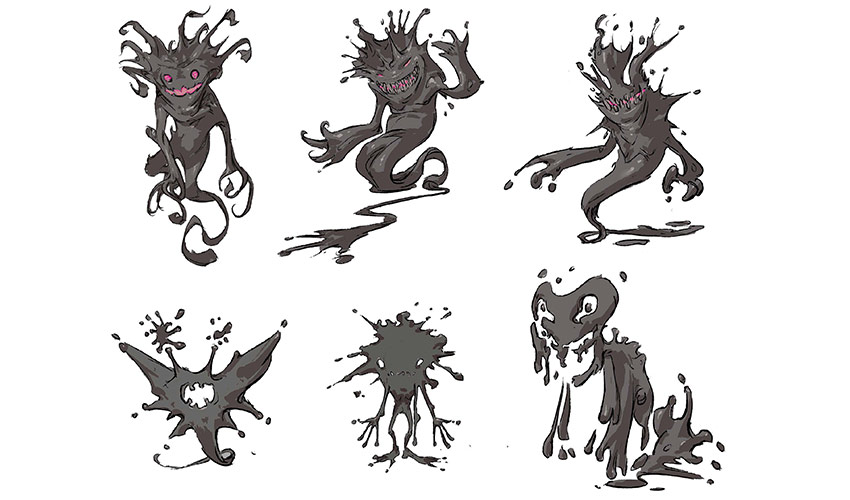
Black-aligned mages in Silverquill sometimes craft shadow magic into flying creatures called inklings. These living, inky voids can serve as helpers and pets, but their physical attacks can also be devastating, tearing at an opponent's life force. Their fluid, changeable forms alter to reflect their creator's thoughts and intentions.
Prismari College
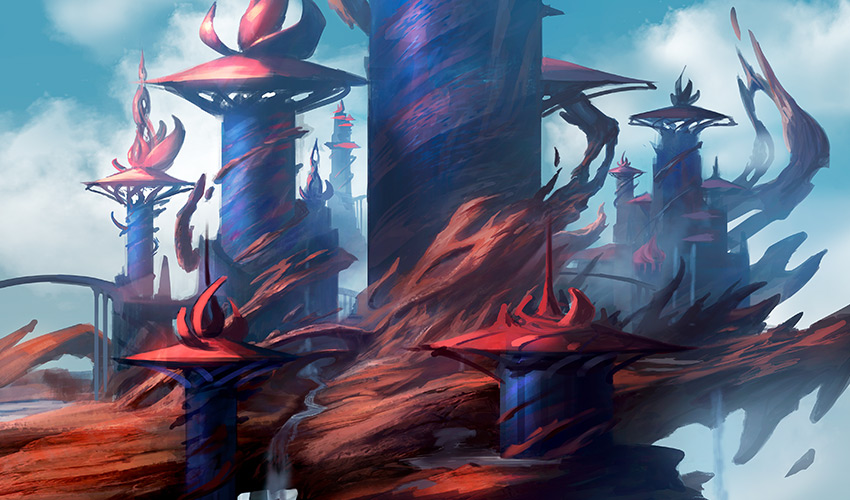
"We agree that art is the truest form of spellcraft, that expressing oneself beautifully is the true purpose of magic. But we disagree on method. Some of us hone our technique over years of practice; others of us scream out a pent-up emotion."
— Brodd Scaldbreath, Prismari professor emeritus
The College of Elemental Arts
The art students of Strixhaven, Prismari mages see no difference between magic and art. Their spells are spectacles of raw creativity: masterpieces of showy, over-the-top magic. Each Prismari student uses elemental magic to express who they are and how they see the world, and often use more than one element. Fire, ice, water, wind, earth, stone, lightning, heat, cold, snow, tornadoes, earthquakes, the rumbling pulse of pure energy—any elemental force can be a Prismari muse and medium.
The Dichotomy of Prismari
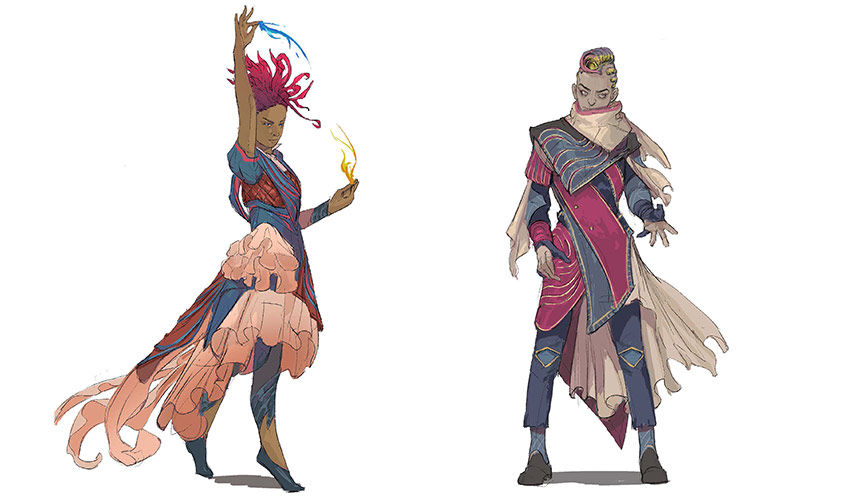
Blue
The blue side of Prismari deals with artistic training and study, visualization, precise technique, and artistic theory. Many Prismari blue mages, of course, are elementalists—artists who devote themselves to blue-aligned subdisciplines of elemental magic. Cloud conjurers, mistmages, zephyrists, skybrushers, vortex virtuosos, waterbinders, ice sculptors, huesplashers—all of these are mage-students and professors who express their art through air, water, and other elements. Beyond that, aesthemancers and compositionists study abstract principles of beauty. Splendor diviners and vistamancers find truth within beautiful sights or in personal visions. Opusmancers and master creators create huge, over-the-top magical effects. Avant-guardians embrace conceptual, counterintuitive leaps of brilliance.
Red
As with blue, many red-aligned Prismari mages are some flavor of elementalist. Geosculptors, flameshouters, lava mavens, emberbrushes, stonebenders, electrovisionaries, stormpainters—all of these express their emotional truth through fire, earth, and other elements. Beyond that, spectacle mages and wonderworkers hurl wondrous, stormy displays into the sky—often to amuse or distract rather than to cause harm. Heartragers turn their inner creative fire into personal strength, while muse channelers project their own momentary blasts of inspiration into others. Ruleburners and blast innovators use their art to shatter stereotypes and customs (and, quite often, property).
Locations
Conjurot Hall
A towering structure with a glassed-in observation area at the top, encircled by constantly changing strands of elemental energy. Artist-mages can see for miles from the Conjurot's main turret, and the view has inspired many artistic creations.
Opus Walk
A winding path through the central campus buildings, along which hundreds of Prismari elemental creations are displayed. Some of the more famous pieces of magical art have been displayed along the Opus Walk for centuries, while other transient bursts of creativity last only a few moments.
Furygale
A notorious region of the Prismari campus where the abandoned creations of thousands of past artist-mages have coalesced over the years. Roped off by wards and warning signs, Furygale is several square blocks of ever-changing magical energies, gales of ice and wind and fire, and elementals gone rogue. It's inherently dangerous but also a source of wild creative inspiration, and despite its dangers, it remains a popular spot for students who want to duel without being interrupted by authority figures.
College Mascot: Elementals
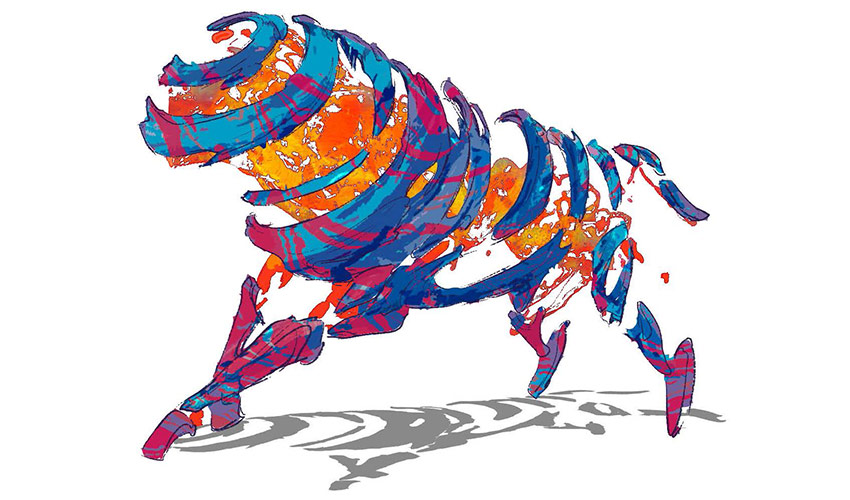
To the mages of Prismari, elemental creatures are a form of living art. Mages sculpt artistic shells from a fusion of raw elements, then conjure living elemental energy to inhabit the shells. The result is a powerful creature capable of expressing sublime emotions
Witherbloom College
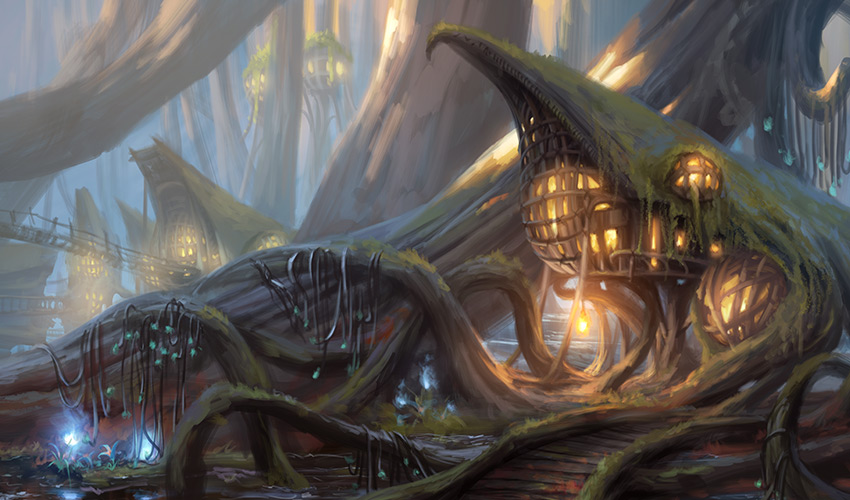
"Within all life dwells a living essence, and this essence is the key to the most powerful magic imaginable. Do we use that essence to preserve the natural world, or devote life's power to our own mighty ends?"
— Sabain Croctooth, Witherbloom professor of blood studies
The College of Essence Studies
Witherbloom mages draw power from the opposing forces of life and death. They brew their powerful spells from natural components and the essence of living creatures, using that power to heal or harm the living, raise or entreat the dead. They wield magic that can cause entire teeming forests to blossom out of nowhere or call down ancient druidic curses that scourge flesh from bone. Some Witherbloom mages defend ecosystems from marauding pollution, while others revel in the power of corruption and death. They're at home riding zombie crocs down a languid river, picking herbs for a potion to treat a wasting disease, brooding over a chorus of swamp frogs, or summoning up fearsome ancient avatars of nature.
The Dichotomy of Witherbloom
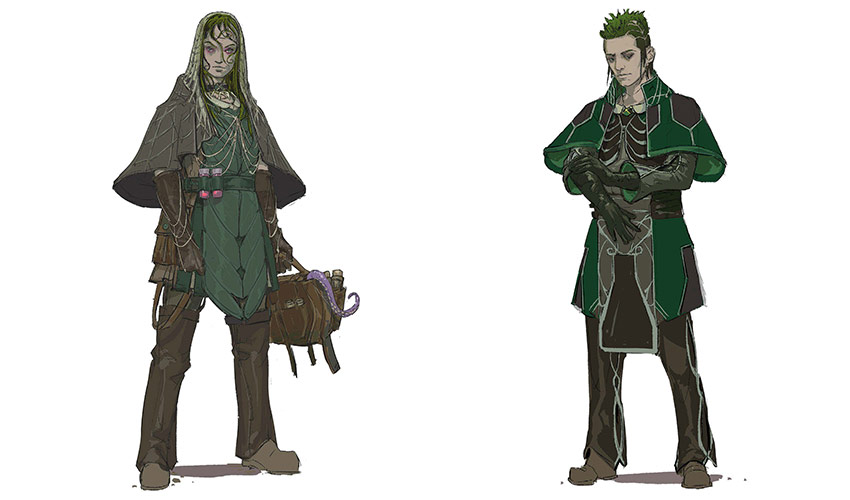
Black
Black mages of Witherbloom focus on exploiting life energy for their powerful witchcraft. Ritualists, bleed doctors, pestcatchers, dissectors, and vein witches squeeze the essence out of crumbling living creatures to fuel powerful dark spells. Banelocks and cauldron-weirds use foul concoctions of noxious ingredients to weave withering curse magic. Bloodstirrers, skullmancers, dreadbones, and other necromancers infuse dead tissue with magic to do their bidding.
Green
Green mages of Witherbloom focus on encouraging life energy to blossom and grow. Herbalists, boon witches, and leafbinders use medicinal herbs to soothe wounds and empower living creatures. Earthcrouchers, mudmasks, and bayou druids connect directly with the land, literally getting low and touching the living bog of Sedgemoor, to power their nature magic. Boughcallers, trudge gardeners, and pest wardens summon bog creatures and harvest the microlife that dwells upon them.
Locations
Sedgemoor
The bayou area that encompasses the Witherbloom campus. Sedgemoor is known for a range of strange swamp beasts: undead animals, bats, crocodilian monsters, decomposing bayoustriders called trudges, and marsh-dwelling canine beasts called bogroffs. Sedgemoor is an excellent place to find pests, herbs, spidersilk, fungi, and other potent ingredients for potions and spells.
Widdershins Hall
The center of the Witherbloom campus is Widdershins Hall, a kind of bog mansion that looks like it was grown out of Sedgemoor itself. Widdershins is a network of interconnected wooden pods with planked walkways leading out of it like the tentacles of some kind of swamp creature. Widdershins Hall has a cozy inner chamber where professors bring together student witches for classwork.
Detention Bog
A stinking, thoroughly unpleasant marshland adjacent to the Sedgemoor, plagued by cantankerous creatures called vineclingers. Witherbloom professors send misbehaving students here as punishment, but it's also an excellent place to gather herbs for certain powerful cures and curses.
College Mascot: Pests
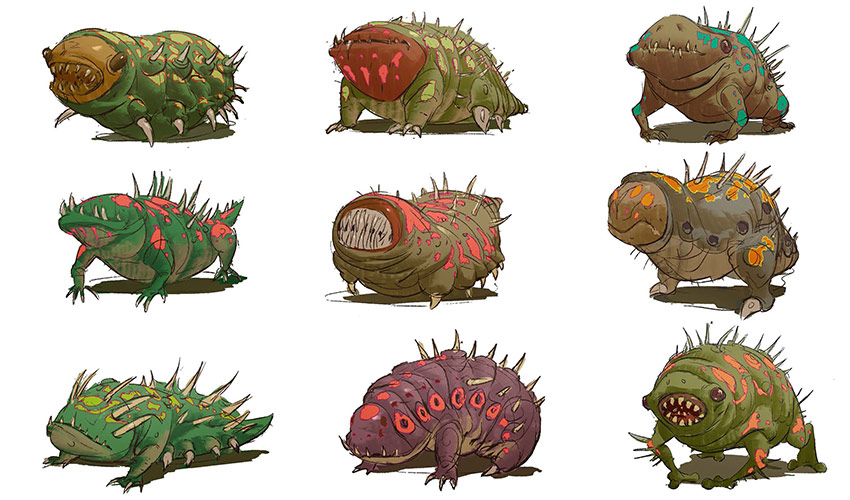
Witherbloom mages need life essence in order to channel their magic, and the creatures that most frequently do the job are simply called pests. Pests are salamander-like, generally irritating creatures that dissolve readily into magical power for Witherbloom spells. Most mages outside of Witherbloom think of pests as awful creatures: they are disagreeable, hissing, spiky, untrainable monsters that bite without hesitation. But Witherbloom mages often carry pests around, doting on them as pets—pets that also serve as convenient sources of life essence.
Lorehold College
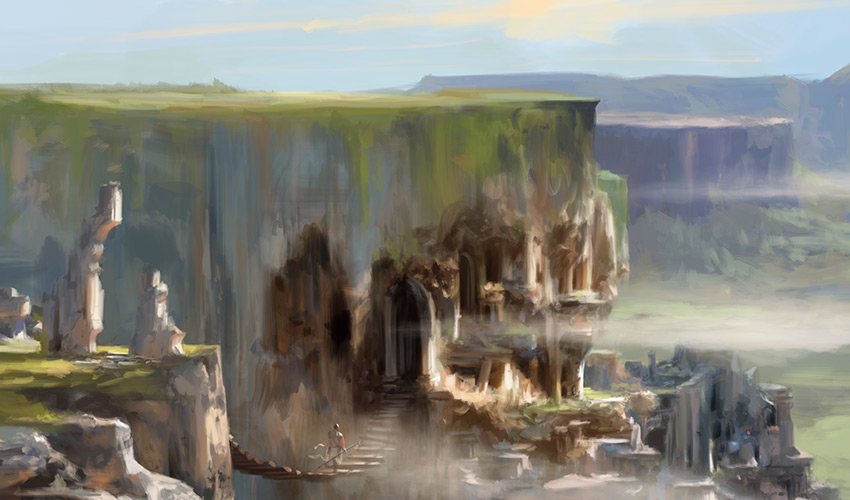
"We differ on what history teaches us. Is time a chaotic dance of coincidences and conflicts, or does civilization gradually progress toward an ordered ideal? But we agree that the past holds the answer to every question, so we must revive it and discover its truths."
— Teruud, Lorehold pastraiser
The College of Archaeomancy
Lorehold mages are passionate scholars obsessed with history. They explore the past by poring over archaeological artifacts, calling forth magical energies from ancient tomes and summoning the spirits of long-dead historical figures. They travel far and wide across the plane in well-worn leather boots and traveling cloaks, gathering ancient relics and learning dead tongues to unpack the secrets of history.
The Dichotomy of Lorehold
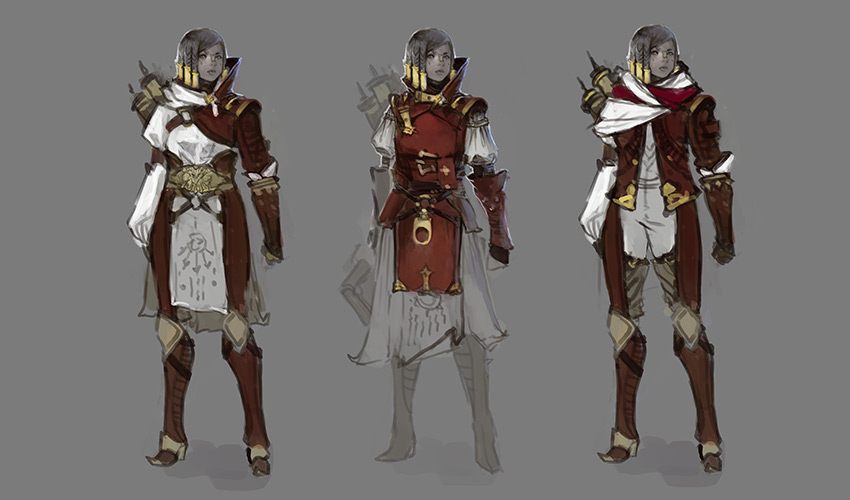
Red
The red mages of Lorehold gravitate toward reckless discovery and the spirit of adventure in their research of the past: the essence and emotion of history over precision or procedure. Cliffbusters and ruin shamans wield magic that helps them delve into the remains of ancient sites. Chaos scholars, trivialists, and absurdophiles chase down anecdotes of history as a ridiculous litany of chance happenstance. Warlores get excited about the magic that was used in the wars of the Blood Age. Dustspeakers and heroscorns love to converse with the spirits of the past to find the whole ugly truth about them—foibles, frailties, and all. Scrollbashers and tomewielders use history in a pretty literal way: by summoning magic directly from the characters scrawled in their pages, or by bashing fools with heavy books!
White
Antiquarians, truthfinders, and archaeoscribes love to uncover and record the past; they're often surrounded by lengthy scrolls and tomes in which they chronicle historical truths for posterity. Relic readers, aeonmancers, and monument priests uncover ruined statues of ancient historical figures, divining wisdom from the past from the context of ruin sites. Iconologists, pastraisers, and ghost advocates bind spirits into the monuments that bear their likeness, conversing with them to learn about their great and inspiring deeds. Battle mediums and spiritualists can actually strengthen and empower summoned spirits for use in battle. Conservators, pastquoters, docents, and curators preserve and care for ancient spell knowledge, artifacts, and other relics of the past on the Lorehold campus. Honorbringers and allusionists can draw on the truths of history to enhance, inspire, or empower allies, whereas ruleciters and canonists use historical precedent to enforce magical laws.
Locations
Pillardrop
A series of historical buildings excavated directly out of sheer, perpendicular cliffs, now used for research, classwork, and housing. Travelers walk along treacherous bridges from one "neighborhood" of Pillardrop to another, often passing directly by the enormous stone faces of ancient, excavated statues.
Effigy Row
The main campus area of Lorehold. Its pathways are lined with monuments of famous historical figures, including past professors and prominent mage-students as well as war heroes and heads of state from ages past.
Kollema Hall
A grand, multi-tiered gallery where Lorehold mages gather for large lectures and demonstrations. Thousand-foot-long scrolls spill over the balconies as mages study ancient texts. The center of Kollema Hall is the magnificently restored statue of Kollema, the wise monk who was one of the first Lorehold professors at the founding of Strixhaven.
College Mascot: Spirit Statues
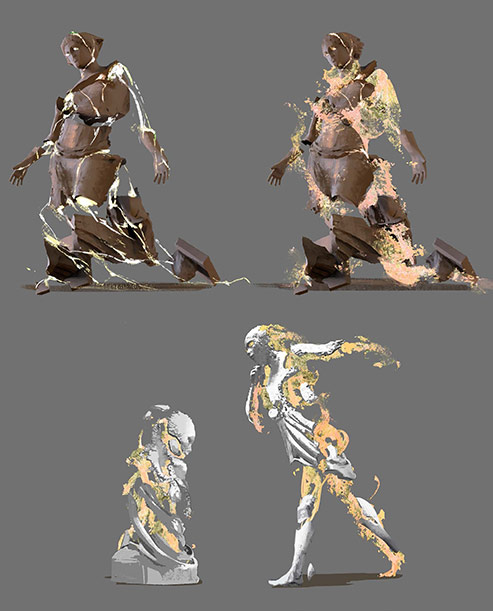
Lorehold mages supplement their study of history by calling on the spirits of the ancient dead. While dustspeakers and pastraisers conjure spirits and interview them for knowledge of the past, battle mediums and other Lorehold mages sometimes draw on the magical power of those spirits
Quandrix College
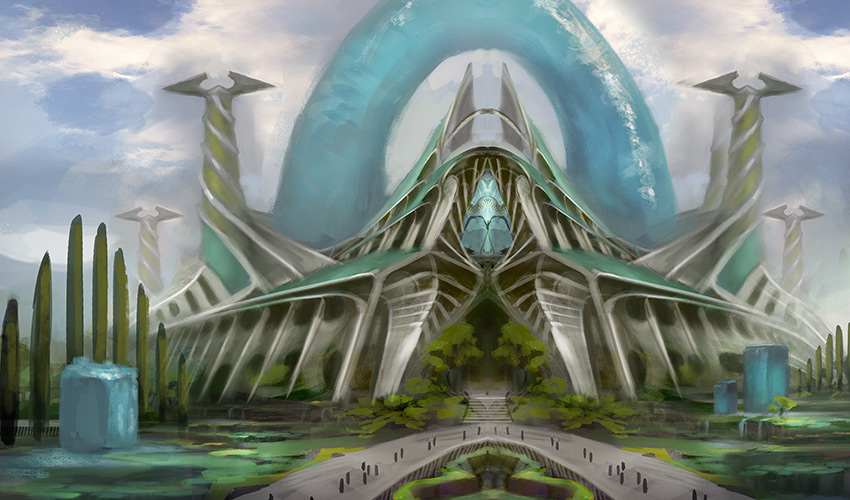
"We disagree whether numbers exist out in the world, or whether mathematics is a purely logical exercise that exists only in our minds. But we agree that we're the only ones who study the truly fundamental forces of reality."
— Imbraham, Quandrix Dean of Theory
The College of Numeromancy
Quandrix mages are ingenious nature mathematicians. They study patterns, fractals, and symmetries to wield power over the fundamental mathematics of nature. They can summon creatures made of fractals or turn abstract theories into towering, spiraling patterns. Quandrix mages love to increase, expand, and multiply: they can expand their knowledge or quadruple their own size by bending numbers. Their costuming and magic shows how they dwell in the overlap between the theoretical and the natural—the fabric of their robes and the nature of their spells come across in repeated elements, clever symmetries, and surprising geometry.
The Dichotomy of Quandrix

Green
The green side of Quandrix is focused on bringing numerical possibilities to life, creating physical reality out of mathematical possibilities. Vivifiers, zoetimancers, and figurists conjure fractal creatures based on biological life. Augmentors and scale druids, simply put, enjoy making things BIGGER. The famed Quandrix mana scholars investigate the nature and possibilities of mana itself and give lectures on leylines, Snarls, spellcasting, and other mana phenomena across the plane.
Blue
The blue side of Quandrix attracts those who delve into the abstract realms of theory, conjecture, and possibility. Abstractors and proofspinners conjure wild magic that stretches the possibilities of space. Spiralmancers and fractalologists create beautiful patterns and odd optical illusions with uncertain relationships to reality. Echognosts and sequence prophets learn by studying infinite repeating patterns that bend the mind. Metamancers, phenomenologists, and void theorists go beyond numbers to study and tweak the fundamental nature of reality itself, learning or altering essential truths about the world. Sometimes this generates "impossibles," which are strange, surreal beings born of paradoxes.
Locations
Torus Hall
The central hall of Quandrix campus lies at the end of a geometric series of walkways, ending in the ascending ramps to the towering building. Inside, Torus Hall's architecture is mapped to an ever-changing three-dimensional grid that slowly changes and evolves over time. Some Quandrix professors insist that mage-students shouldn't linger too long inside the Hall, lest its geometry eventually turn itself inside out while they're still within it.
The Arithmodrome
The Quandrix campus is alive with dynamic sculptures made of water behaving in odd ways: cube-shaped fountains, arching aqueducts that flow through the air, towers of solid-seeming water. One water structure holds a secret: a mysterious inner expanse called the Arithmodrome. From the outside, the Arithmodrome looks like a large cube of water, 10 feet on a side. Inside, it's an infinite-seeming theory-space where the rules of reality are suspended. Mages use this space to explore theoretical numerical possibilities.
The Cultivarium
An eye-popping, sun-drenched garden of spiraling, cyclical plants and fractalized animals. Quandrix professors have repeatedly taught growth spells in this part of campus, and over the centuries, the area has come to intensify any growth magic cast within it.
College Mascot: Fractals
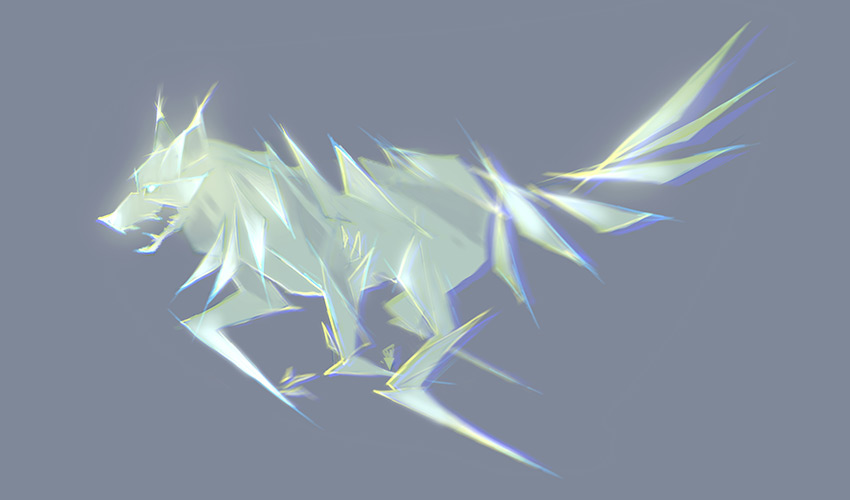
Quandrix magic can abstract and replicate the patterns of nature into artificial life forms called fractals. Because they are essentially formulaic representations of creatures brought to life, they can be mathematically scaled in size from tiny to enormous, making them effective companions for mages who use them as playthings, pets, helpers, and allies in combat.
Outside the University
The Vastlands
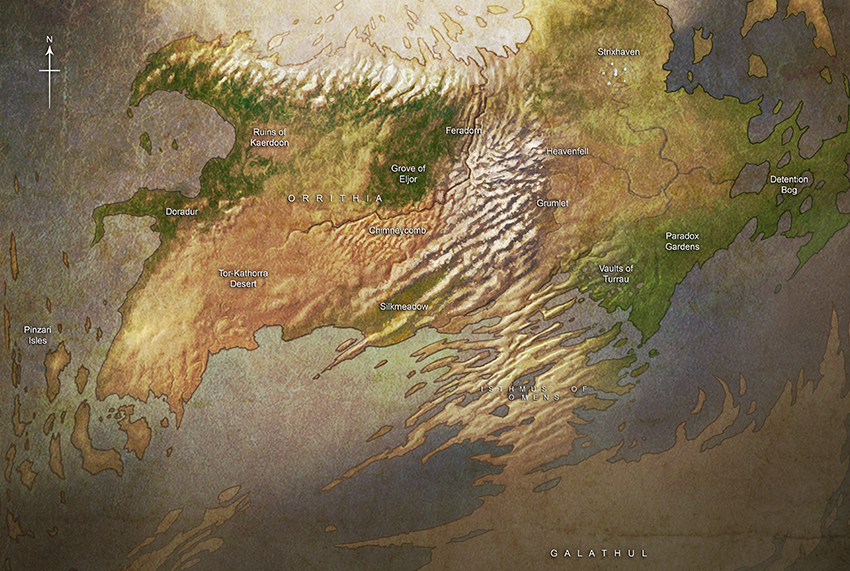
Most of the known plane is broken across two huge continents—the northern continent of Orrithia, commonly known as the Vastlands, and a mysterious southern continent, called Galathul. The two are linked by a land bridge called the Isthmus of Omens. Strixhaven University is situated in the northeast of Orrithia.
The Founder Dragons
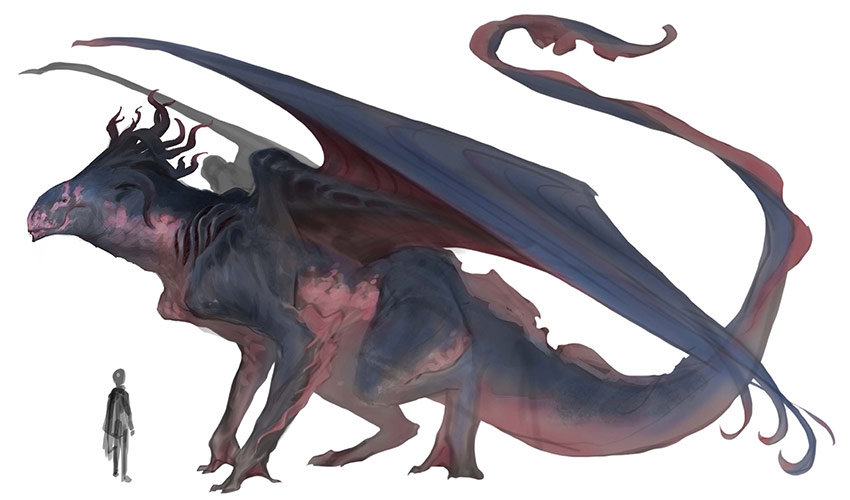
At the birth of the plane, as the mana of two planes overlapped in conflicting ways, many forms of life adapted to the new structure and many new forms of life were spawned. Five particularly powerful vortices of overlapping mana became luminous spheres, from which were hatched five dragons. These dragons have become emblems of the magic of the plane, living symbols of the clashing forces of the five dichotomies.
The Founder Dragons were the first to master the magic of the five enemy color combinations. When the humanoid races arose, at first the dragons were angered that mortals would try to harness the wild forces of magic, but they came to realize that only through disciplined study would magic be in safe hands. So, centuries ago, the dragons founded an institution devoted to the study of the five mana dichotomies, and that institution is what we now know as Strixhaven. The five colleges were based around the magic mastered by each of those dragons.
To this day, the Founder Dragons roam the plane, the five deadly sages of the skies. They no longer associate directly with Strixhaven, preferring to let the deans of the college speak in their stead. The dragons' wisdom is vast, but their tempers can be short. Mages seek them out only to learn the most elusive of secrets.
The Oriq
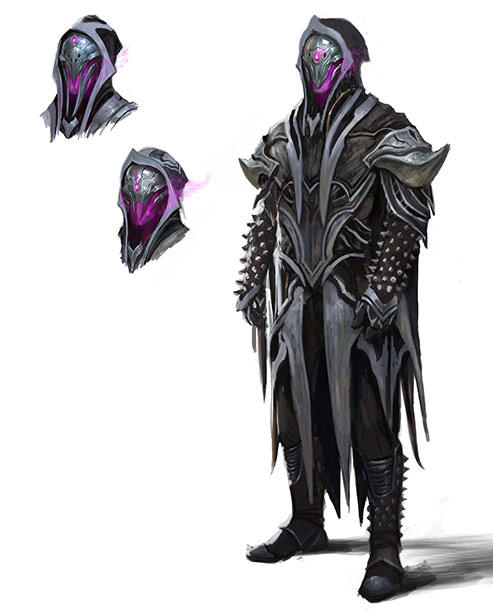
The Oriq are a secret society of mages who wield forbidden forms of magic. They reside far from Strixhaven but often infiltrate the university looking for spells and recruits for their dark schemes. Oriq agents use deception, stealth, and their darkly powerful brand of magic in pursuit of their sinister goals.
Duels to the death, stealthy assassinations, infiltrating institutions full of mages, blood rituals—the Oriq agenda is dangerous and taxing, so the organization frequently needs new members. Oriq agents actively seek out and recruit promising mages, and one of their favorite hunting grounds is Strixhaven. An Oriq agent will frequently reach out to powerful but underperforming mages or students who have fallen through the cracks of the institution, using illusion magic and subterfuge to hide their Oriq identity. A student doesn't typically know they're being groomed for Oriq recruitment—they only see that they're being invited to an exclusive engagement by an alluring and complimentary stranger. And then when the mage is at their most vulnerable, they are offered the mask.
The Archaics
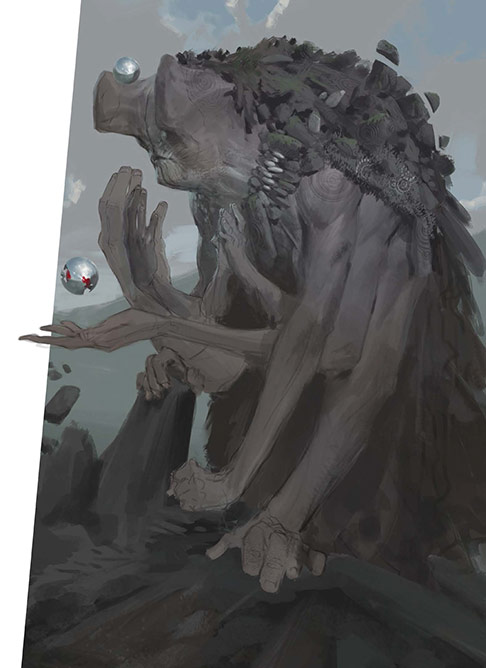
The Archaics are a race of wise, giant, long-lived beings with an innate talent for magic. They can be seen striding through the Vastlands, exploring sources of magic with their many arms or contemplating existence through their "eye," which is a magical focus of some kind. Archaics can live for thousands of years; many are thought to have been alive since the Dawning Age. Mages seek out Archaics for their vast knowledge of history and magic, but Archaics tend to communicate in obscure allusions and cryptic metaphors.
Star Arches
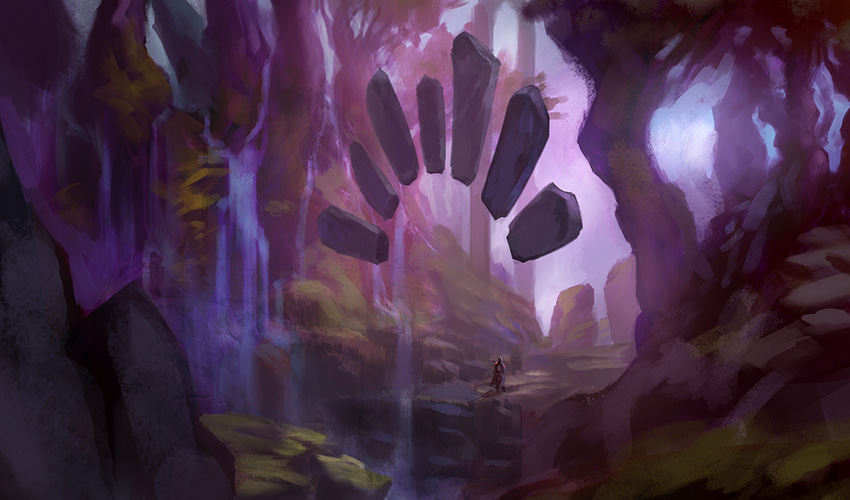
Gravity-defying arch shapes crop up all over this plane, looking like mystical shrines or monuments. They're made from spokes of natural materials that float in an arch shape, with a precise inner curve and a rough and irregular outer arch. They can stand straight or lie at an angle; they can be small or enormous, whole or broken, grown over or mysteriously clean. Their irregular spokes evoke the radiating lines of a shining celestial star.
The star arches are a mystery left over from the Dawning Age, when the plane was young and none of the humanoid races yet walked the earth. In most cases, the arches simply sit there, floating inexplicably, silent, immovable, and inert. But many have said that they've seen an arch appear to them at a critical juncture in their lives, helping them understand a lesson or answer a burning question in their mind. Some believe that each arch marks a place of great magic, such as the site of the birth of a great mage or the location of a time-lost spell. Others believe that they're connected with the Archaics in some way—some claim they've seen an arch come to life with powerful magic in their presence.
Snarls

Mana flows through all the plane of Arcavios. But in certain sites, the mana becomes knotted and tangled. At these places, magic and spells can be at their most powerful—and at their most dangerous. These places are known as Snarls. According to the Archaics, the Snarls are places where two conflicting sources of antagonistic mana overlapped together at the birth of the plane.
Class Dismissed
Hopefully, you've learned a little bit about Arcavios and a whole lot about Strixhaven University. If you're still hungry to learn more about the world, you can read an overview of the set's legends later next month. Additionally, new Strixhaven: School of Mages stories will be added twice weekly for the next few weeks at MTGStory.com. If you're eager to enroll, you can find your college by taking this thorough and legally binding quiz. But most importantly, we hope you enjoy the world, which the following people (and more!) helped to create:
Credits
Concept Artists
Daarken
Jehan Choo
Lena Richards
Nick Southam
Rebecca On
Sam Burley
Tyler Jacobson
Vinod Rams
Worldbuilding Team
Andrew Vallas
Annie Sardelis
Doug Beyer
Emily Teng
James Wyatt
Fox Allison
Sydney Adams
Graphic Designers
Daniel Holt
James Arnold
Art Director
Taylor Ingvarsson
Creative Producer
Meris Mullaley
Creative Lead
Doug Beyer
Creative Director
Jess Lanzillo
